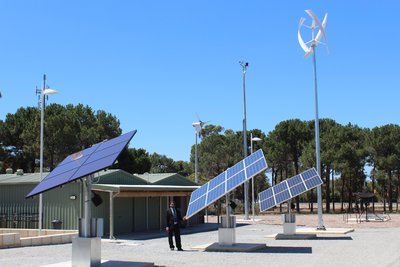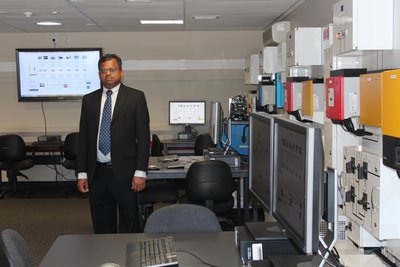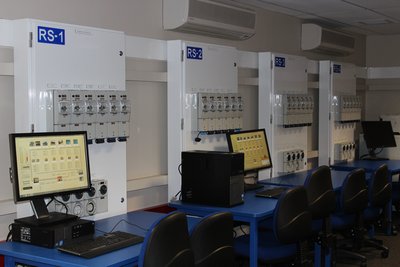The green energy lab of the future
Friday, 21 June, 2013
When Curtin University’s renewable energy research centre CRESTA closed in 2004, the university found itself lacking a facility devoted to renewable energy. So when Dr Sumedha Rajakaruna was asked to design and build a new lab, he made sure the full use of expensive renewable energy sources could be achieved.
The Green Electric Energy Park (GEEP), funded by Curtin and the Australian Power Institute, was officially opened by Parliamentary Secretary for Energy Dr Mike Nahan MLA in November 2012. Built on futuristic power system concepts, it showcases $1.2 million of state-of-the-art renewable energy systems used for teaching, training and research, including solar photovoltaic arrays, wind turbines, micro-hydro turbines and fuel cell stacks.
“The inclusion of a fuelcell-electrolyser system and hydro power station makes it different from other laboratories that exist elsewhere,” said Dr Rajakaruna.

The facility is particularly notable for its integration of different renewable energy sources to work as a microgrid which can supply the power to loads - whether or not it is connected to the utility grid.
“For grid-connected operation, the lab is like your house with a PV system on the rooftop - simply feed power by sources and consume by loads,” said Dr Rajakaruna. “However, when the utility grid is disconnected, the inverters backed by a large battery bank produce AC power at the required voltage and frequency. The system can run as long as the batteries do not get overcharged or over-discharged.”

New methods of power supply are constantly being developed at the lab by Curtin researchers.
“One PhD student of mine is working on building a multi-microgrid system where different microgrids communicate with each other in hours of need and share resources to continue to supply power to their loads during power outages of the main utility grid,” said Dr Rajakaruna.
Not only does the facility generate power, but it can monitor and display it in real time via the internet, enabling it to be used for teaching and research purposes. Meanwhile, an on-site weather station provides students with data about the conditions at the time.

Curtin’s students thus have the opportunity to learn about, and experiment with, several types of renewable energy sources. There are seven teaching stations, each dedicated to a different type of renewable energy source or storage. Dr Rajakaruna says GEEP adds “an exciting element to what we have to offer to our students and our state in the field of science and engineering”, attracting prospective students as well as academics and industry groups to the lab and to Curtin.
Although GEEP is currently the only facility of its kind in Australia, it is hoped that it will serve as a model for future renewable energy laboratories.
Scientists unveil genomic 'tree of life' for flowering plants
The genomic tree sheds new light on the evolutionary history of flowering plants and their rise...
Found: the most massive stellar black hole in the Milky Way
With a mass 33 times that of the Sun, and based a mere 1926 light-years away, Gaia BH3 is the...
Astronauts will soon grow plants on the Moon
When humans take their first steps back on the Moon after 50 years during the Artemis III...







